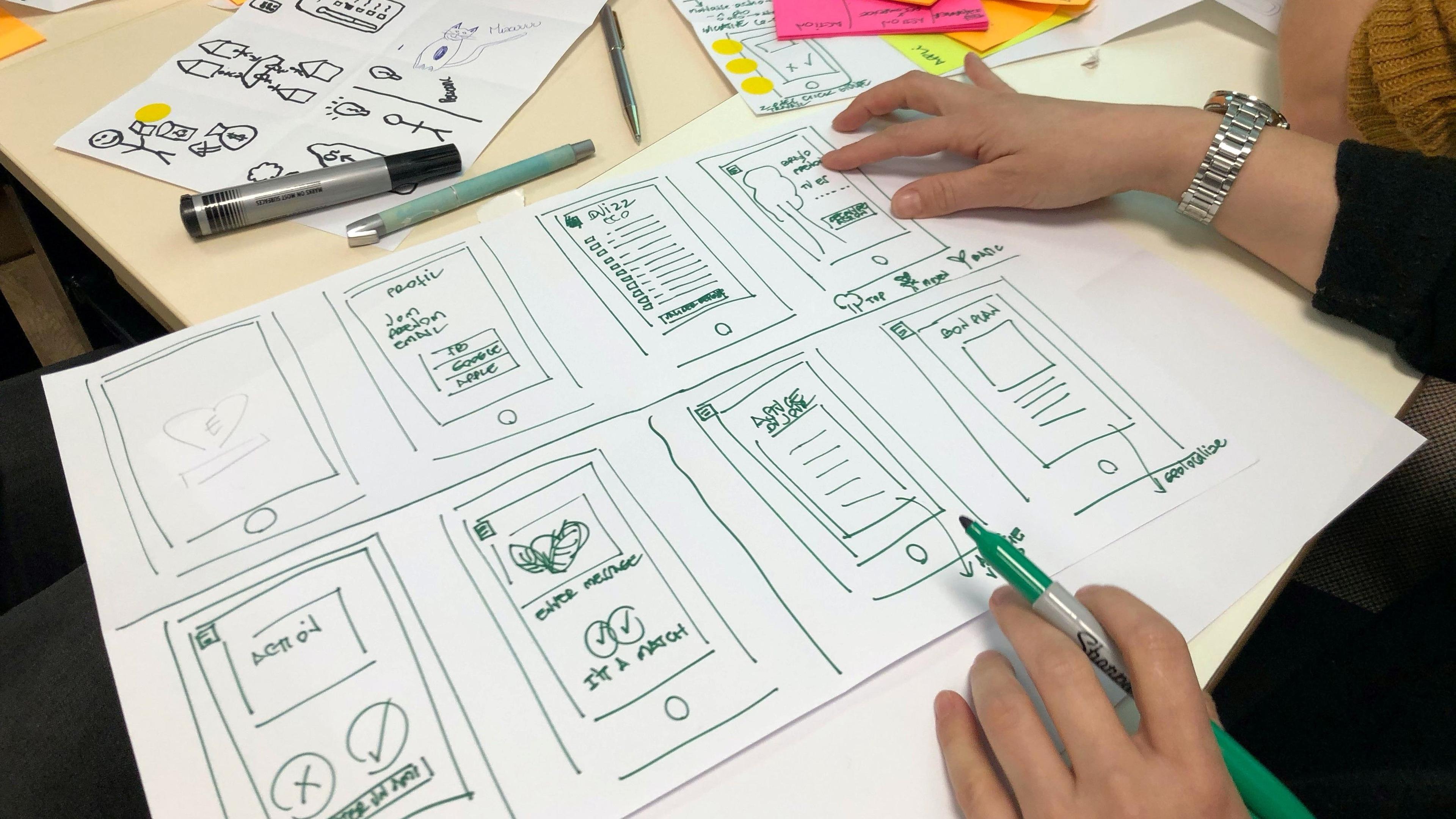
Human interaction design. How to create the best UX design?
The customer is always right? Surprisingly, this cliché seems to adequately describe the contemporary sales philosophy. Running a business, even a small e-commerce operation, you need a website designed specifically with your customers in mind to be successful. This is why User Experience – the general way users feel when browsing a website – is so important.
UX, UI, Web Design – what is what?
So UX means User Experience, but what about UI or Web Design? Naturally, these concepts are closely related, but slightly different, and it would be ignorant to put an equals sign between them. User Interface (or UI) is the interface along with all of the elements which allow the user to interact with a webpage.
Going into a bit more detail, User Experience deals with designing an information architecture, prototypes, interactions, analysing user behaviour and developing possible scenarios, while User Interface concerns aspects such as:
- design
- layout
- typography
- colour scheme.
User experience tips to succeed
As in all spheres of life, trends change every year, but there are a number of golden rules you should keep in mind regardless of the current fad. Here are the most important ones:
User experience is not the same as usability
The key myth in the context of User Experience and Usability is that a lot of people make a comparison between them. If something constitutes a textbook example, it cannot be an ideal choice in the real world. Why? Imagine that you are visiting a charming old castle which testifies to the passing of time and the weight of history. How would you feel if it were carefully restored? Well… its whole charm would disappear. This is also the case with UX and Usability – having all aspects working perfectly well does not mean that your users will be active and engaged. A good friction is desirable!
User experience is an entire process, not just a step
People tend to think that UX is just a small phase of a bigger process. In fact, User Experience is basically a separate procedure consisting of Strategy (definition), Interaction and Interface Design (ideation and prototype), Development (realisation) and, last but not least, Analysis. Remember that these elements are interconnected and complement one another.
Every user is unique
There are almost 8 billion people in the world, and each and every single person who walks the earth is unique… that means you are too! Our routines and inclinations are very personal. Therefore, it is essential to analyse traffic, study users’ personas and their behaviour, co-design, conduct in-depth interviews and create usability tests. As Seth Godin said, “users don’t care about you”. Even though caring for them seems to be a thankless task, it may prove highly rewarding!
Users act in an irrational manner
We don’t act in a thoughtful manner. We’d like to behave that way, but… no way, Jose! We are not prudent; instead, we are predictably irrational. There seem to be some hidden forces that shape people’s decisions. Our rationality is bounded (e.g. because of time limits or the cognitive limitations of the human mind), which can be clearly seen while decisions are being made. We are usually looking for quick satisfaction rather than the optimal solution. We are not Homo Usabilitus at all!
People are scanning rather than reading
“Too long; didn’t read” – a funny meme, isn’t it? Not really! Nowadays people don’t have the time to read lengthy articles, or they simply claim that they are too busy to do so. Either way, the fact is that we scan texts and seek only for the most important information. According to studies, people read approximately 20% of a website’s entire content. The situation is different when we are reading for pleasure and with great interest – in this case, we are able to meticulously analyse the text. Therefore, websites designed with reading in mind must increase the willingness to reach the end of the text.
Scroll, scroll, scroll – there is no fold
There is an incalculable number of research findings which testify to people’s tendency to scroll. Therefore, it is also important to follow some design principles when wishing to provide high-quality content. These include: avoiding the false bottom, creating jump-to options, using sticky navigation, scroll-triggered animations and parallax effect. Moreover, you should avoid scroll hijacking and make sure that the “back” button works properly. It’s easy, right?
Following an information scent
Have you ever watched the movie “Scent of a Woman”? Well, it is so 90’s. In 2020, it is the information scent that is much more relevant! Have you ever heard of the “3-click-to-view” principle? This one comes from times long past as well. Nowadays, users are usually willing to click approximately 25 times until an information scent, consisting of what the user sees and what the user already knows about the source, becomes strong enough.
If the product is innovative, design should be functional
OK, so you have designed an absolutely beautiful website. It’s cool, but what about the product? Is it a one-in-a-million kind of thing? If so, you are on your way to becoming a millionaire, but if not, an original design is just not enough to succeed. In this regard, remember to focus on the website’s functionality (it could also be gorgeous, right?) and product innovation when starting a new project.
Death to lorem ipsum
Here is a yet another case from ancient times. Do we still need this archaic standard of typesetting, the main purpose of which is to demonstrate the visual form without relying on meaningful content? No, we don’t! It’s confusing (a nice design without the full context is insufficient) and it doesn’t fit well with a UX-focused world in which many elements are to work together. So, goodbye, old friend!
But first… User Experience
And, last but not least, a mobile-first approach is also a UX myth. This does not mean that we should ignore its importance, but we need to remember that when using the Internet or an application on a smartphone, one encounters such limitations as screens smaller than desktop monitors (they display less content, which means that simplification is essential), no peripheral devices (without a keyboard or a mouse, it’s easier to accidentally tap your screen) and slower Internet connection or hardware with lower parameters (good website performance is critical). That’s why developers should pay a lot of attention to user experience when creating a mobile website – because nobody wants to wade through a neglected and annoying interface.
Need help developing the best UX concept for your website or e-commerce operation? Contact us!

Radosław Gardys
Content Specialist




